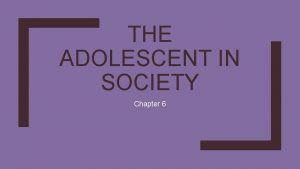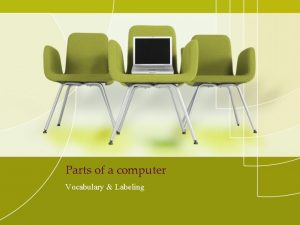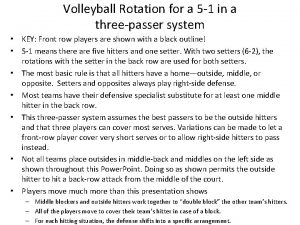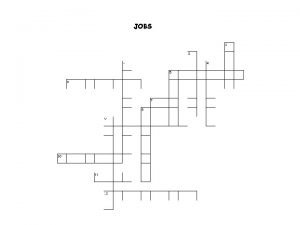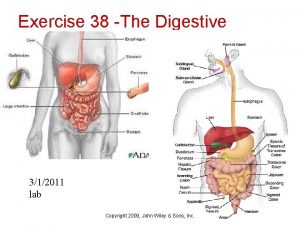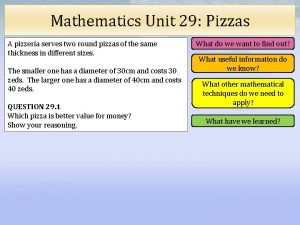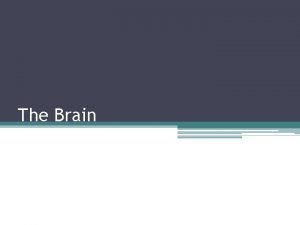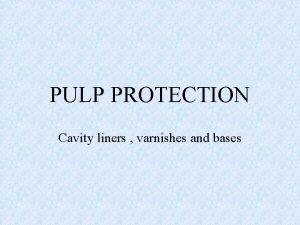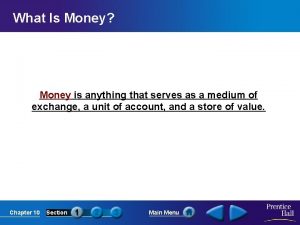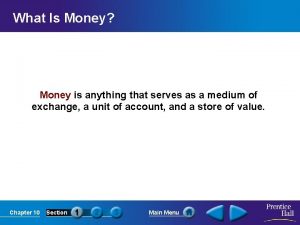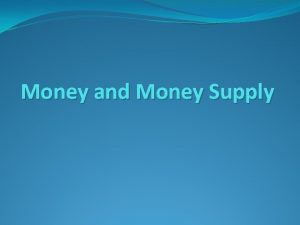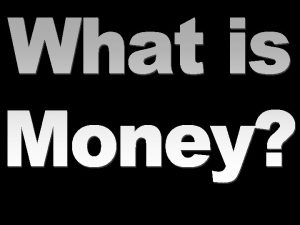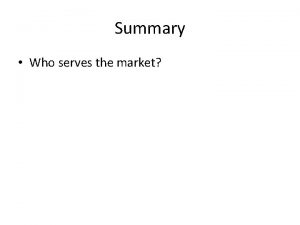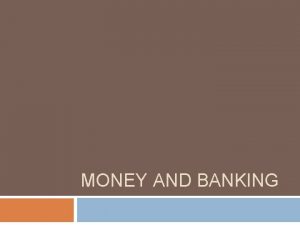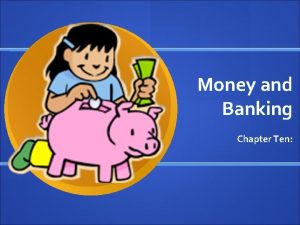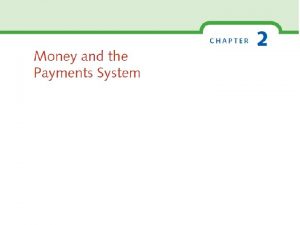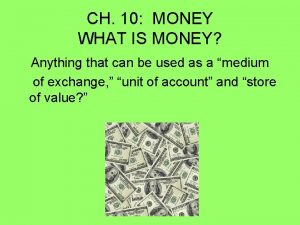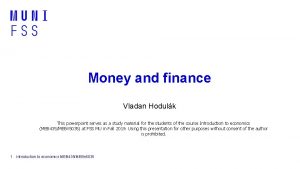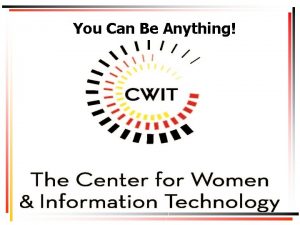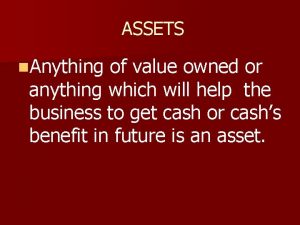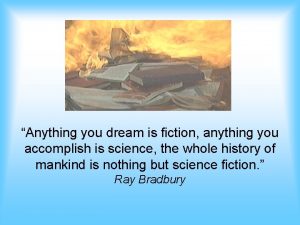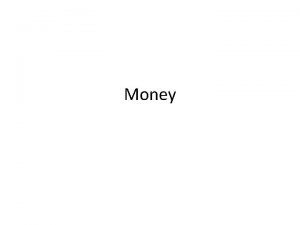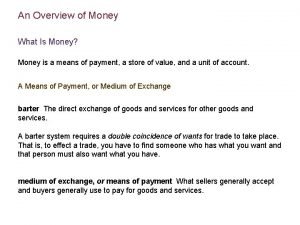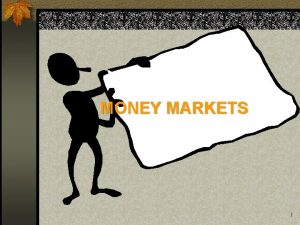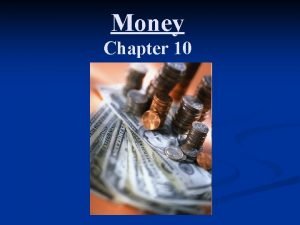What Is Money Money is anything that serves























- Slides: 23

What Is Money? Money is anything that serves as a medium of exchange, a unit of account, and a store of value. Chapter 10 Section Main Menu

The Three Uses of Money • Money as Medium of Exchange –A medium of exchange is anything that is used to determine value during the exchange of goods and services. Chapter 10 Section Main Menu

• Money as a Unit of Account –A unit of account is a means for comparing the values of goods and services. Chapter 10 Section Main Menu

• Money as a Store of Value –A store of value is something that keeps its value if it is stored rather than used. Chapter 10 Section Main Menu

6 CHARACTERISTICS OF MONEY • DURABILITY • PORTABILITY • DIVISIBILITY • UNIFORMITY Chapter 10 Section Main Menu

• LIMITED SUPPLY • ACCEPTABILITY Chapter 10 Section Main Menu

American Banking Before the Civil War Two Views of Banking • Federalists believed the country needed a strong central government to establish economic and social order. Chapter 10 Section • Antifederalists were against a strong central government and favored leaving powers in the hands of the states. Main Menu

Banking Stabilization in the Late 1800 s The National Banking Acts of 1863 and 1864 gave the federal government the power to: 1. Charter banks 2. Require banks to hold adequate reserves of silver and gold 3. Issue a single national currency Chapter 10 Section Main Menu

In 1900, the nation shifted to the gold standard, a monetary system in which paper money and coins are equal to the value of a certain amount of gold. 1. It set a definite value on the dollar. 2. The government could only issue currency if it had gold in its treasury to back its notes. Chapter 10 Section Main Menu

Banking in the Twentieth Century • The Federal Reserve Act of 1913 created the Federal Reserve System. The Federal Reserve System served as the nation’s first true central bank. Chapter 10 Section Main Menu

• The Banking Act of 1933 created the Federal Deposit Insurance Corporation (FDIC). Today, the FDIC insures customers’ deposits up to $250, 000. The nation was also taken off of the gold standard. Chapter 10 Section Main Menu

The money supply is all the money available in the United States economy. Chapter 10 Section Main Menu

Banking Services Storing Money Banks provide a safe, convenient place for people to store their money. . Chapter 10 Section Main Menu

Credit Cards Banks issue credit cards — cards entitling their holder to buy goods and services based on each holder's promise to pay. Chapter 10 Section Main Menu

Saving Money Four of the most common options banks offer for saving money are: 1. Savings Accounts 2. Checking Accounts 3. Money Market Accounts 4. Certificates of Deposit (CDs) Chapter 10 Section Main Menu

Loans By making loans, banks help new businesses get started, and they help established businesses grow. Mortgages A mortgage is a specific type of loan that is used to purchase real estate Chapter 10 Section Main Menu

How Banks Make a Profit • The largest source of income for banks is the interest they receive from customers who have taken loans. • Interest is the price paid for the use of borrowed money. Chapter 10 Section Main Menu

Types of Financial Institutions • Commercial Banks – Commercial banks offer checking services, accept deposits, and make loans. • Savings and Loan Associations – Savings and Loan Associations were originally chartered to lend money for home-building in the mid-1800 s. Chapter 10 Section Main Menu

• Savings Banks – Savings banks traditionally served people who made smaller deposits and transactions than commercial banks wished to handle. Chapter 10 Section Main Menu

• Credit Unions – Credit unions are cooperative lending associations for particular groups, usually employees of a specific firm or government agency. • Finance Companies – Finance companies make installment loans to consumers. Chapter 10 Section Main Menu

Electronic Banking The role of computers in banking has increased dramatically. Automated Teller Machines (ATMs) Customers can use ATMs to deposit money, withdraw cash, and obtain account information. Chapter 10 Section Main Menu

Debit Cards Debit cards are used to withdraw money directly from a checking account. Chapter 10 Section Main Menu

Home Banking Many banks allow customers to check account balances and make transfers and payments via computer. Chapter 10 Section Main Menu
 Dana damian
Dana damian Hãy nói thật ít để làm được nhiều
Hãy nói thật ít để làm được nhiều Thơ thất ngôn tứ tuyệt đường luật
Thơ thất ngôn tứ tuyệt đường luật Tôn thất thuyết là ai
Tôn thất thuyết là ai Ngoại tâm thu thất chùm đôi
Ngoại tâm thu thất chùm đôi Walmart thất bại ở nhật
Walmart thất bại ở nhật Gây tê cơ vuông thắt lưng
Gây tê cơ vuông thắt lưng Premature atrial contraction
Premature atrial contraction Tìm vết của mặt phẳng
Tìm vết của mặt phẳng Sau thất bại ở hồ điển triệt
Sau thất bại ở hồ điển triệt Thể thơ truyền thống
Thể thơ truyền thống Dating serves several important functions that include
Dating serves several important functions that include Point cutting milady
Point cutting milady This serves as the “meat” of the paragraph.
This serves as the “meat” of the paragraph. Chapter 6 the adolescent in society
Chapter 6 the adolescent in society What blood vessels cover the alveoli
What blood vessels cover the alveoli A computer that serves one user at a time
A computer that serves one user at a time 5-1 rotation volleyball
5-1 rotation volleyball He serves in a restaurant
He serves in a restaurant Serves as a mixing chamber and holding reservoir
Serves as a mixing chamber and holding reservoir A pizzeria serves two round pizzas of the same thickness
A pizzeria serves two round pizzas of the same thickness Obj dating
Obj dating Which part of the neuron serves as the protective coating?
Which part of the neuron serves as the protective coating? Use of varnish is contraindicated under
Use of varnish is contraindicated under














